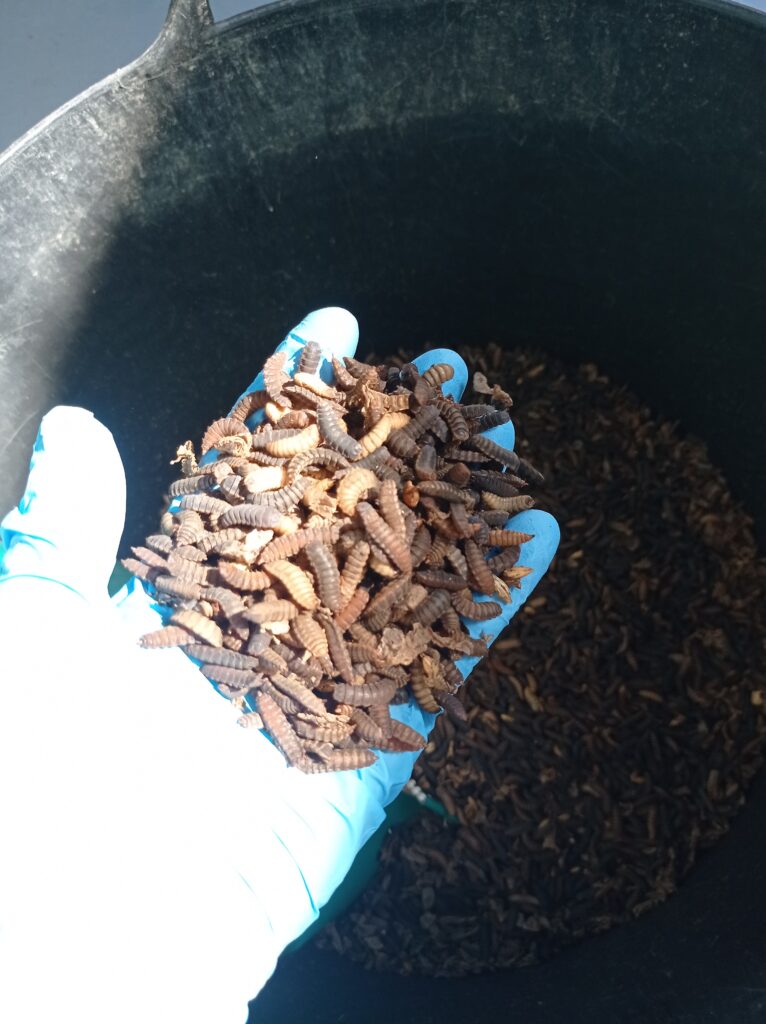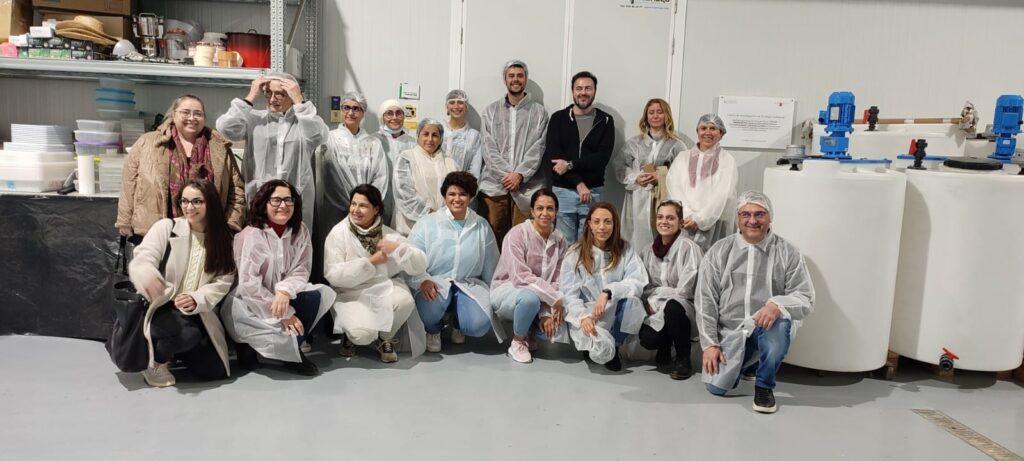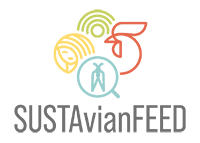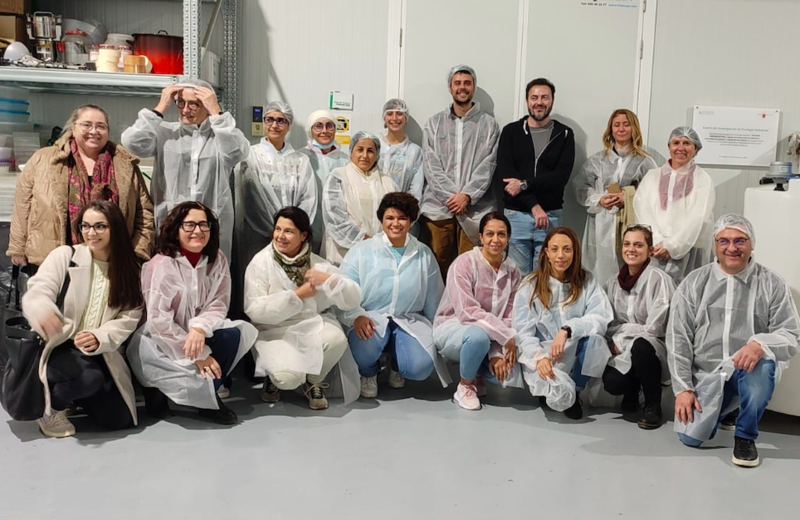Could insects be an environmentally friendly, local-economy-boosting and socially valuable source of livestock feed? We talked to Juan Antonio Cortés of Entomo AgroIndustrial, a partner in the SUSTAvianFEED project, to find out more.

The debate over insect farming as an alternative protein source for both animals and humans has been heating up in the European Union, with the European Commission recently approving the marketing of the larvae of Alphitobus diaperinus (a beetle that commonly lives where grains and flour are stored) in frozen, paste and dried form. This decision follows the January 2018 approval of the regulation on the marketing of “novel foods” for food purposes. Domestic crickets (Acheta domesticus), yellow grubs (Tenebrio molitor) and Locusta migratoria have already been approved for breeding and sale to consumers, and eight more insects could soon get the green light.
But apart from interest in insects as a human food, they also have great potential as livestock feed, offering an alternative source of nutrition that could make food production more environmentally friendly, grow local economies and have social value too.
Feed production is key to making animal farming more sustainable, which is why alternative poultry feeding systems are being explored in a pilot project, SUSTAvianFEED, whose lead partner is Spanish agricultural transformation society Alia. Slow Food is a partner in the project, along with the University of Murcia (Spain), the University of Ege (Turkey), Association Rayhana (Tunisia), Institut Supérieur Agronomique de Chott Mariem – ISA-COM (Tunisia), the University of Turin (Italy) and Entomo Consulting SL (Spain).
SUSTAvianFEED aims to demonstrate an innovative approach to poultry farming systems based on sustainable feed for the livestock. The project is developing a sustainable nutritional formula for poultry farming in which insects play a key role.
We talked more about this with Juan Antonio Cortés of Entomo AgroIndustrial, a platform of professionals who manage and coordinate industrial projects for insect production. Its mission is to use insects to transform waste from the food industry into sustainable animal feed.
What types of insects does Entomo raise and what is its role in the SUSTAvianFEED project?
Entomo’s mission is to provide engineering services and research for the industrial production of insects and their derivates. The company focuses mainly on the production of Hermetia illucens, also known as the black soldier fly. Our role in the SUSTAvianFEED project is to show how insects can become a sustainable component in poultry feed, and this is done at two different levels. Firstly, the company is producing insects and supplying them to the other partners working on the chicken pilots. Secondly, it is also setting up several insect pilots, where insects are being produced: two in Tunisia (low tech for farmers and medium tech for the university) and a high-tech pilot in Spain.
What do insects eat?
IWhen they are intended for use as animal feed, insects are considered farm animals and thus their production must follow farm animal regulations. This means the insects only can be fed with plant-origin material like fruit, vegetables and grains and their derivates, as well as dairy and egg products. To ensure the sustainability of the project, vegetable waste and spent brewery grains will be used during maximum production
What kind of facilities and conditions are required for insect breeding?
For the production of these insects, the temperature, humidity, ventilation and light radiation must recreate the environmental conditions of a tropical climate. To do this, we have special climate chambers installed with a HVAC system for climate control. In our case, we occupy 500 square meters in our research facility in Cehegín, Murcia.
Can they be farmed in any environment?
Since the insect farm is constructed with insulating panels and a complex HVAC for climate control, this kind of facility could be installed anywhere. In theory it would be less energy intense in the tropics and demand more energy in continental and arid climates. However, with the correct design (which is what Entomo does), an insect farm could be so energy efficient that it could be profitable in any location in the world.
What are the most interesting aspects of using insect larvae for poultry feed?
There are several positives to using insect larvae for poultry feed. To mention just some, insects are part of the natural diet of poultry and contribute to their healthy growth. They are more sustainable than some other feeds and nutritionally provide a good level of proteins, healthy oils and chitin. What’s really interesting is that farmed insects can be fed organic waste that no other animal eats and would otherwise be thrown away, so they don’t compete with other farm animals. Besides this, they use far less land and water than other crops and farm animals. The market price is still high, between €1,900 and €3,500 per ton of larvae meal, but prices keep going down.
Can insect farms be part of the circular economy?
Larvae farms clearly offer a great circular economy opportunity. In fact, I would say that they are a typical example of the circular economy. We have organic waste (non-marketable fruits and vegetables, produce trimmings and peels, dry bread) that normally ends up in landfill, but now this waste can be used to feed the larvae. Once grown, they can be harvested and processed to produce proteins, oils, fertilizer and chitosan of a stable quality which can re-enter the food chain. A problem is converted into a solution, making for a highly sustainable activity.
Does insect farming bring up similar problems to other intensive animal farming? Do the insects suffer, and can high densities lead to diseases that could cross over to humans?
It is always desirable to treat animals in the correct way because they become more productive. While most farmed animals suffer more when they are in crowded conditions, insect larvae are gregarious and far happier when they are in close contact with their counterparts. So, by feeding them abundantly, with no rest day or night, in super-crowded spaces with a good climate (which is what we do), we make them the happiest creatures on earth. The insects are not considered to suffer since they do not have a complex neuronal system allowing them to have thoughts; they have ganglia instead of brains. Insect diseases only affect insects and not mammals, so there is no risk of disease transmission from insects to humans.
Could insect larvae have a place in future animal farming?
Yes! They are already starting to, but there is still a long way to go before insects become a common commodity in supermarkets or in animal feed formulas.
Is small-scale insect breeding conceivable, or are scientific skills and high-tech equipment required? In other words, is this a useful resource only for those who intensively raise large quantities of poultry, or can it make sense for small-scale, free-range farms as well?
All the scales are conceivable as long as it makes economic sense. In tropical countries, just a shelter is enough, and farmers and entrepreneurs could produce larvae and supply them locally. But away from the tropics, where the climate is not optimum, it is necessary to invest in a complex facility, and once the investment is high the production must be well controlled. So high-tech equipment and highly skilled personnel are needed.
This project has highlighted a use for insect larvae of even more potential interest than their food value. They could prove to be a great ally in the development of circular economy projects, transforming agricultural residues or organic waste produced in cities into high-quality, high-protein animal feed, accessible even to poorer countries. The SUSTAvianFEED project is exploring this potential further—look out for more results being announced in the coming months.
Follow project updates on Facebook









Leave a Reply
You must be logged in to post a comment.